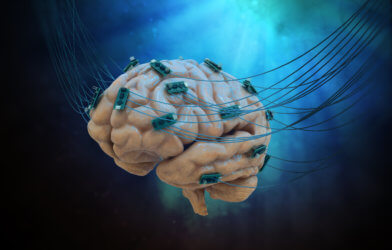A new brain implant system has demonstrated the ability to help people with paralysis communicate by translating imagined handwriting into actual text. This promising research manifested in helping a man paralyzed from the neck down since 2007 due to a spinal cord injury communicate via writing for the first time in years.
This brain-computer interface, or BCI, utilizes artificial intelligence to capture and interpret neural activity onset by handwriting. This device comes from a long-time collaboration with company BrainGate.
The man, who was older than 65 years of age during the study, concentrated as if he were writing with an imaginary pen and paper during the experiment. The electrodes implanted in his motor cortex captured signals of brain activity. The signals were then interpreted by an intelligent algorithm running on an external computer, which translated the man’s imaginary writing movements into the letters of the alphabet and a handful of punctuation marks.
Frank Willet, first author of the study and neural prosthetics researcher at Stanford University stated that “the new system uses both the rich neural activity recorded by intracortical electrodes and the power of language models that, when applied to the neurally decoded letters, can create rapid and accurate text.”
BrainGate has developed similar systems in the past which translate neural activity to text. These systems often involved different cerebral metaphors, such as a point-and-click methodology, which involves typing individual letters with a cursor controlled by the mind.
Researchers were unsure how written letters would translate, given it is “a more rapid and dexterous motor skill” than the point-and-click system. The patient in this study was able write up 90 characters per minute with 94% accuracy in his writing.
These findings are significant given that not only is the rate notably faster than previous BCI experiments, but the rate of translation is “almost on par with the typing speed of smartphone users in the man’s age group – which is about 115 characters or 23 words per minute.”
Researchers found that because of the unique shape each alphabetical letter possesses, the AI can more rapidly interpret the drawn characters compared to other BCI systems “that don’t make use of dozens of different inputs in the same way.”
The research is still in its infancy, as the system has only been conducted on one participant and only proves proof of concept thus far. The next steps to take include training others to use the interface, expanding the character set, updating the sensitivity of the system, and adding additional editing tools for the user.













Comments